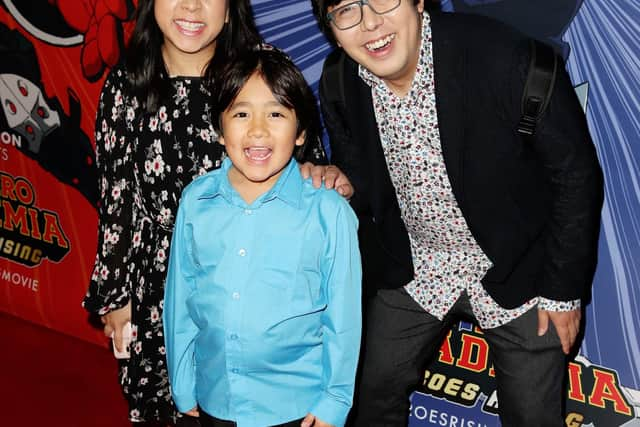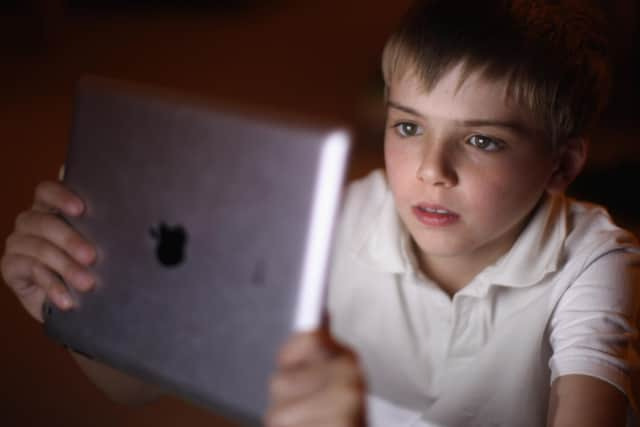Wild west of 'kidfluencer' industry requires regulation - Martyn McLaughlin
The rise of so-called child influencers - or ‘kidfluencers’ - on social media sites such as Instagram and video sharing platforms like YouTube is one of those developments which leaves older generations aghast, in much the same way as their own parents and grandparents recoiled when presented with moving images of Elvis’s swaying hips.
But once the shock value of seeing kids as young as four hawking toy products for advertising revenue has subsided, more searching questions spring to mind. What impact is it having on children, and why is there no regulation around this fast-growing craze?
Advertisement
Hide AdAdvertisement
Hide AdSuch thoughts have been occupying MPs on the Digital, Culture, Media, and Sport committee as part of their inquiry into influencer culture. Their evidence sessions have not received much attention so far, but they are carrying out important work, and the recommendations they make in their final report will be significant.
If you are not familiar with kidfluencing, the first thing you should know is that it is a multimillion pound industry. The most famous star is Ryan Kaji, a 10 year-old from Texas, whose YouTube channel became a phenomenon by showing him unboxing and reviewing various toys and games.
The youngster, who starred in his first video at the age of three, now has close to 31 million subscribers on YouTube, and his videos have attracted close to 50 billion views around the world. The ad revenue earnings from those clicks alone amount to around £20 million a year, but the boy’s family is making several times that sum thanks to merchandising deals with companies like Marks & Spencer.
His parents have rejected accusations that they are treating their son as a workhorse, and say it only takes a few hours a week to produce the videos. But the family, and the site which hosts their content, are coming under scrutiny.


A complaint has been filed with the US Federal Trade Commission by a consumer watchdog which alleges that nearly 90 per cent of the Ryan’s World videos have included at least one paid product recommendation aimed at children “too young to distinguish between a commercial and a review,” with the advertisements often depicting unhealthy foods.
Indeed, food with dubious nutritional value features prominently in videos by so-called kidfluencers and their families. Where once toys and games dominated, a phenomenon known as mukbang has spread like wildlife, featuring entire families filming themselves devouring fast food in paid-for promotions.
This is a curious and unsettling realm of content, where the lines between personal life and professionalism are blurred to the point that they become non-existent. The main problem, however, is the involvement of primary aged children. Their parents may see it as a way of securing their future, but what agency do they have, and what protections are they afforded?
Earlier this month, Ed Magee, the chairman of the National Network for Children in Employment and Entertainment, an association which draws together local authority officers with responsibility for licensing child performers, warned the committee of a lack of oversight around kidfluencers, with the notion of self-generated content not covered by child labour legislation.


Advertisement
Hide AdAdvertisement
Hide Ad“There are certainly children whose lives may be broadcast 24 hours a day, seven days a week,” he explained. “That becomes a concern because you do not know who else is watching and who is possibly contacting them.”
The question of how to address these fears is a matter of political will. In France, precise and proportionate legislation came into force earlier this year which extended the safeguards enjoyed by those youngsters who work as actors or models, meaning that their income is held in a special bank account until they turn 16.
But more than that, the law requires any company wishing to enlist a child influencer to hawk their products to obtain permission from the relevant local authority, and it allows children who star in the videos to a ‘right to be forgotten’, with social media platforms required to remove content if asked to do so.
There is no good reason that a similar suite of provisions cannot be enshrined in legislation here, though it will only answer a few of the myriad ethical questions surrounding kidfluencers.
In such a rapidly evolving media ecosystem, where disruptive technology puts regulators on the back foot, the issue is not how to protect those children who are creating content, but their peers who are viewing it. According to the latest Ofcom study of children’s media use, nearly half (47 per cent) of eight to 11 year-olds say they watch vloggers or YouTube influencers.
This is not a problem in and of itself. There is a playfulness and immediacy to some of the content produced by YouTubers which appeals to children more than formatted television. The difficulty arises when children cannot distinguish between creativity and commercialism, as alleged by critics of Ryan’s World. This dilemma is not restricted to any one channel or site. It is widespread; around a third of those youngsters surveyed for Ofcom’s report said they were not aware of potential endorsements being promoted by influencers.
It is more than 80 years since the introduction of the Coogan Act in California, which was famously passed in response to the plight of Jackie Coogan, a child actor who earned millions only to discover upon reaching adulthood that his parents had squandered the lot.
That law has served as the bedrock for similar legislation around the world designed to put the interests of children first, but in the age of social media, something even more comprehensive is required.
A message from the editor:
Thank you for reading this article. We're more reliant on your support than ever as the shift in consumer habits brought about by coronavirus impacts our advertisers. If you haven't already, please consider supporting our trusted, fact-checked journalism by taking out a digital subscription.
Comments
Want to join the conversation? Please or to comment on this article.
